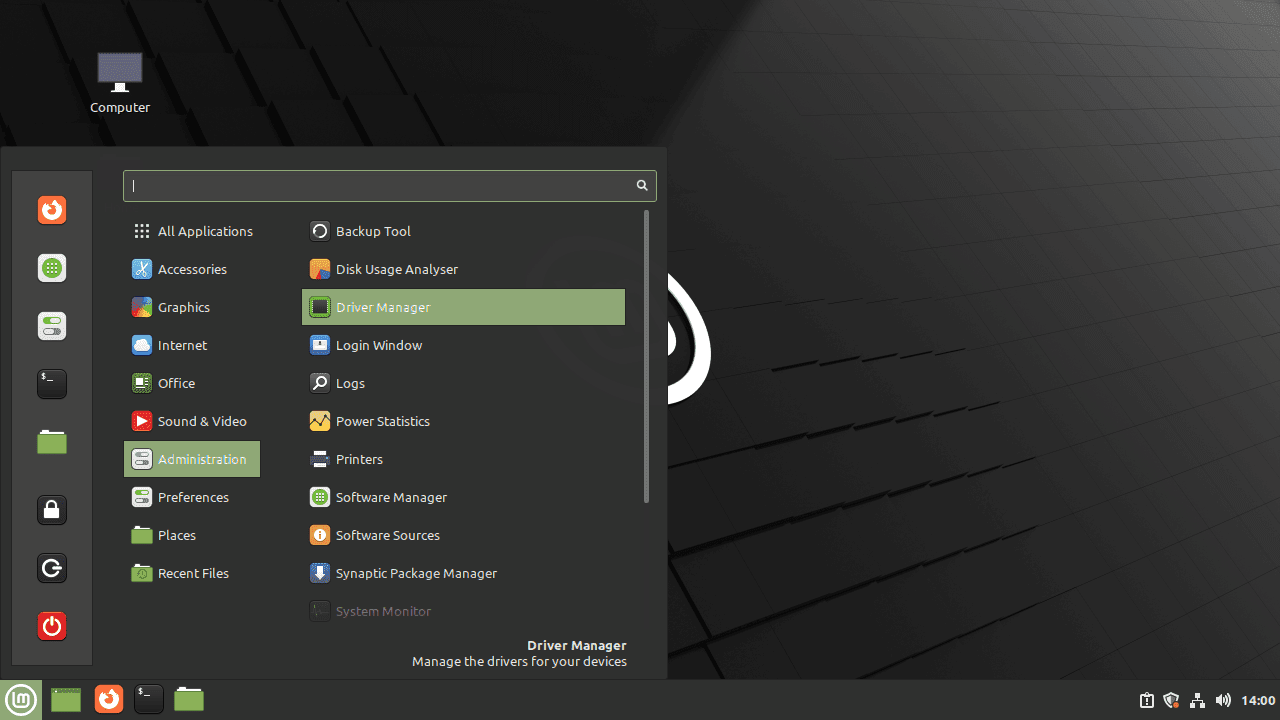I’m planning on changing to Linux eventually, but my PC has a 4060ti. I have heard that Nvidia drivers are a pain to install, and I don’t have the means to change to a non-Nvidia GPU. Am I in trouble?
Bazzite makes it ridiculously easy, there’s just a dropdown to select the nvidia version of their ISO. It’s also a great distro for beginners for a lot of reasons:
bazzite and other immutables generate a new system for you on update and let you switch between and rollback automatically, this is fantastic for reliability, but it also has pretty up to date software, and tons of guides (fedora is one of the most popular distros, and bazzite is essentially identical except with some QoL upgrades).
there’s also aurora if you want the same thing without some addons for gamers.
bazzite is essentially identical
I wouldn’t say that. It is very different in it’s atomic nature, not to mention the pre-packaged software and tweaks.
I meant identical to fedora atomic.
I mean not to be pedantic but there is no “fedora atomic”. There is Fedora Kinoite, Fedora Sway, Fedora Silverblue, etc. Bazzite is just yet another Fedora atomic release.
Actually there was a recent rebrand, https://fedoramagazine.org/introducing-fedora-atomic-desktops/
This isn’t recent, this is over a year old. Also note that “desktops” is plural. As in the ones I listed above make up “Fedora atomic desktops”.
I consider that recent, but… yeah, they’re the fedora atomic desktops. Bazzite is identical to them, you can pick kde or gnome, so it isn’t just kinoite or silverblue, so, atomic is more accurate in this context.
It ranges from “automatic” to “infuriating”.
If you have Secure Boot enabled, there are some hoops to jump through. Read the docs and follow the steps for DKMS.
Depending on your distro and your requirements, you might want to install the drivers manually from Nvidia rather than using older drivers from your distro.
If you need CUDA, god help you. Choose a distro that makes this easy and use containers to avoid dependency hell. Note that this is not any easier on Windows (at least not last I checked, which was a few years ago).
Do not follow this advice OP. Never install the drivers manually from Nvidia unless you’re an expert and have a very specific reason to go this route.
With Mint, just use the driver manager app and you’ll be good.
With CachyOS and Mint, it is very easy.
Remark: I disabled secure boot.
It used to be a pain. Multiple versions that didn’t all work. Today it’s pretty painless. A lot of installers will actually do it for you now.
In arch (at least the last time I did it), it was just a matter of picking the right package and installing it with pacman
EndeavorOS’s installer will do it for you
I use Fedora these days. It didn’t do it automatically the last time I loaded from scratch (not an upgrade), but the rpm fusion team/repository made it simple. I just followed the crystal clear instructions on their website.
I think mint does it automatically with the installer…
Honestly I really don’t even think about nvidia drivers anymore.
The first trick is knowing that there’s a right package. The second trick is knowing what the right package is.
Not necessarily a pain to install, however I’ve had a lot of stupid issues - like not being able to open a TTY session., I can’t run Sway, and Hyprland absolutely refuses to work with my 3 monitor setup.
That’s strange. What distro are you on? What drivers? Hyprland runs just fine on my machine (arch, nvidia-dkms, rtx a6000)
Arch, gtx980, nouveau.
Maybe I should check out dkms
Please do. The fact that you cannot open a tty is very concerning…
I agree. I’m a long-time Linux user and I’ve never seen this before. TTY works fine on bootup, but I’m guessing as soon as the Nvidia drivers kick in, that’s when it shits the bed. I’ll make some btrfs snapshots and try the dickums (lol) driver later today. Here’s hoping!
Yeah, no idea. Turns out I already had dkms installed. Ah well, it’s not a huge deal because I can still ssh or live-usb boot if I really cook something
As long as you don’t make the mistake of downloading them directly from Nvidia, it should be straight-forward.
Mistake? These drivers work much better than the ones in the non-free debian repo, at least for me
Good God! According to the Debian wiki, they’re still on 535, no wonder they don’t work properly! Still, if you use Debian, you know what you’re getting in to. You’ll also have more *fun* when the kernel or nvidia drivers update.
Nah… to update the driver I just re run the file and it usually just works (Even in Wayland, on Debian unstable). The only time it broke was when I upgraded to kernel 6.12 and I had to manually install the open source modules because the ones that came with the proprietary ones had an issue that they later fixed, so it’s totally fine now. The only issue I have with the drivers is that when I wake up the PC from sleep I have to restart Plasma (only on Wayland tho)
Debian stable means stable in the sense of unchanging, not stable in the sense of no-issues.
Where am I supposed to get them then?
From you distros package manager
Each distro has it’s own way of installing the drivers, Mint uses a driver Manager GUI, endeavour OS uses the nvidia-inst script, but ultimately, they come the repositories of the distro.
If you happen to choose OpenSUSE, the " install recommends " will detect nVidia and load some drivers to get it working, but you can also add a specific repo nVidia hosts for Leap and Tumbleweed and download the Drivers / Cuda etc. They work great, so ignore the previous commentor. Laptops with dual GPU need you to setup a switching app to save power, when you don’t need to power the nVidia. If your BIOS has a discrete graphics mode selection, you can choose hybrid, but if your OS has trouble you can set it to discrete only so nVidia is always used. I had to do this on one machine because the OS saw the two GPUs and was trying to treat them has two displays instead of one composite display choice
Whatever distro you pick will have instructions for where and how to install the drivers, if it doesn’t do so for you during the install. Ubuntu is probably most likely to do so easiest. I prefer Fedora for other reasons, which is also easy to get nvidia working, but sightly less easy than Ubuntu where it’s a single checkbox during OS install.
depends on your Distro, for Linux Mint it’s just the Driver Manager.
To access the Driver Manager in Linux Mint, follow these steps:
- Click on the Menu (Taskbar) in the lower-left corner of your screen.
- Navigate to Administration.
- Click on Driver Manager.

Load Device Manager for Nvidia Drivers on Linux Mint
Once you have opened the Driver Manager, follow these steps to install the Nvidia drivers:
- The Driver Manager will prompt you for your password. Enter your password and click on Authenticate.
- The Driver Manager will scan your system for available drivers. Once the scanning is complete, you will see a list of available drivers for your graphics card.
- Select the recommended Nvidia driver from the list.
- Click on Apply Changes to start the installation process.
Then reboot.
For most problems you can really just google stuff like “Linux Mint Nvidia Drivers”
If you are on something like openSUSE, nVidia hosts a repo just for OpenSUSE Leap ams Tumbleweed, and that’s exactly where you get them from, and they work.
True, but you’re not going the Nvidia website, finding and downloading a .run file, manually installing it, and then manually maintaining it which is what I was talking about.
Fair, I mean I have done that too, and would not recommend LOL
It’s trivial. Use Linux Mint or Debian, enable non-free repositories if required, and that’s pretty much it.
I’ve never had issues with Nvidia drivers. Your mileage may vary.
Sometimes it’s plug-n-play and everything works great. Sometimes you press the update Nvidia drivers button on your Ubuntu work computer and then need to tell IT you bricked your OS. YMMV
No, you’ll be fine. And some distros trivialize it. In my case I don’t get as good of framerates as I would on Windows, so there are some issues due to Nvidia not providing open source drivers, but it still works with Linux.
Ya, I must have started using Linux well after Ubuntu made it really easy to install drivers.
Granted you do need to know where to find the option to install drivers, at least you used to maybe its even easier now, but I havent used Ubuntu in a few years.
Once you found where the option to install was it was a click of a button
What distro are you using? It’s getting pretty simple at this point. I’m running Arch and it maybe took 5 minutes to fully set it up.
I’m thinking Mint.
Aren’t they installed by default on Mint? Definitely are on some distros, I think EndeavourOS and Garuda Linux for example
They are not. You have to install the proprietary driver from the GUI driver installer app with 2 clicks.
It’s usually just one command to run.
Depends on the distro. For most of the popular ones, it’s as difficult as clicking a shortcut.
I’m constantly surprised at this point how anyone fails at it. Not to mention there are a number of distros that provide them out of the box now and somehow people still say they couldn’t install it.
If you’re using a desktop, it’s not a pain at all. Any issues are blown out of proportion by AMD fanboys.
If you’re on a laptop, installing them is a bit more of a hassle but using the dedicated GPU is an issue that needs to be addressed someday. Essentially, laptops with Nvidia GPUs need to prepend
prime-runto every application they want to use the dedicated GPU.On NixOS I just copy and pasted like 2-4 lines of recommended configuration and applied it. The driver was then automatically downloaded and installed and I haven’t had to touch it since.
In the case of NixOS, the question would then be : “How much pain in the ass is it to install NixOS, really ?”














